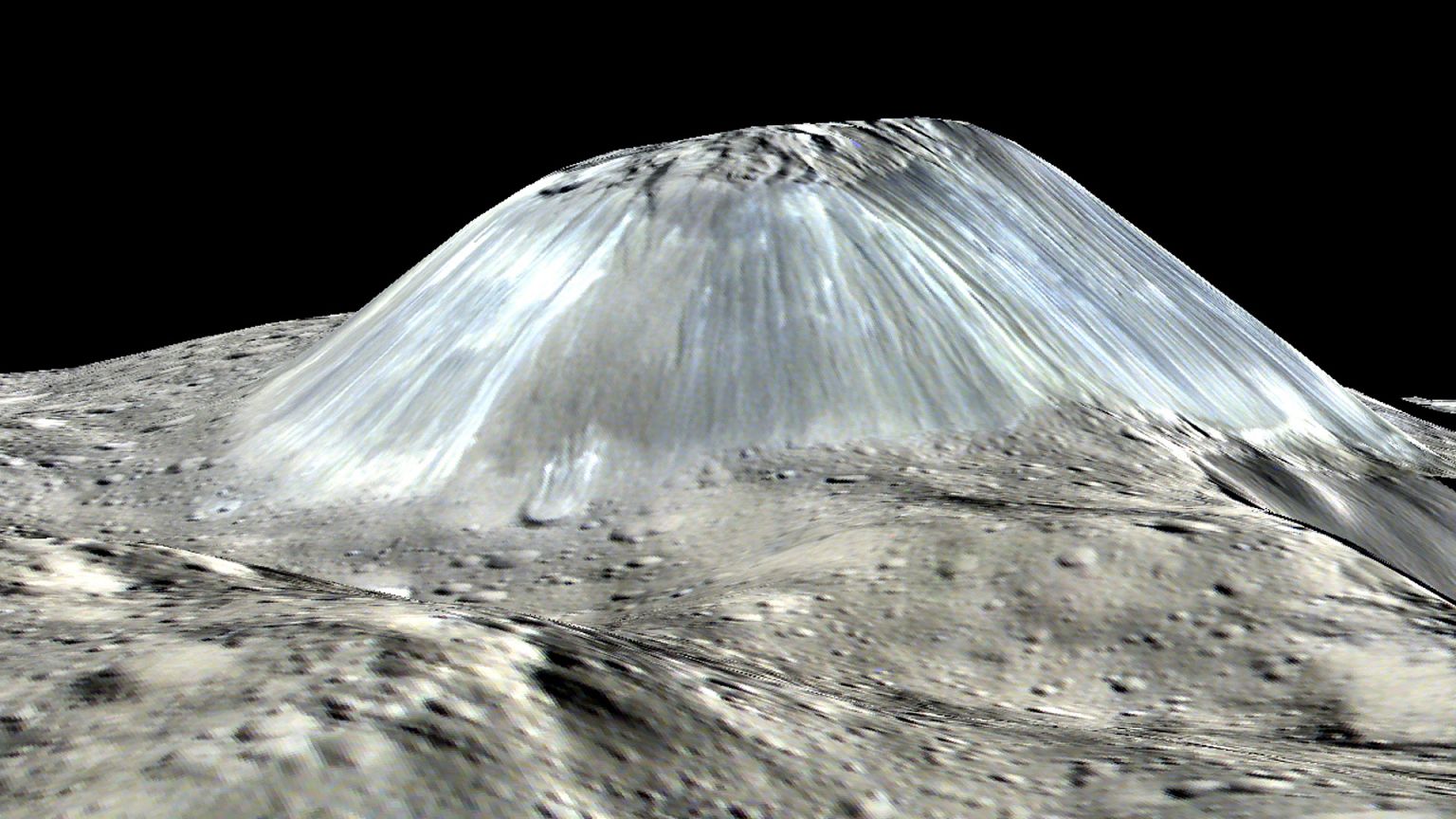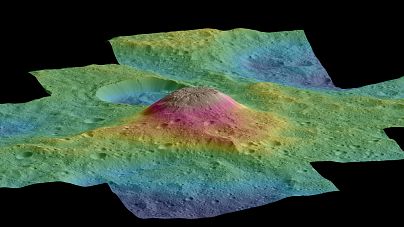Scientists say Ahuna Mons formed when salty, rocky mud rose to the surface of Ceres and froze.
Scientists have come up with a mind-bending explanation for the origin of a strange, streaked mountain on the dwarf planet Ceres, a 600-mile-wide body that orbits the sun in the asteroid belt between Mars and Jupiter.
The huge peak, Ahuna Mons, formed when a blob of salty, rocky mud from deep within Ceres broke through the icy crust and froze, according to astudy published June 10 in the journal Nature Geoscience.
The research adds to evidence that Ceres is geologically active, with a cratered surface shaped in part by eruptions not of molten rock — as on Earth — but of liquid water. This so-called cryovolcanism has been observed on several bodies within the solar system and was first observed on Neptune's moon Triton.
With a summit that lies 4,000 to 5,000 meters (13,000 to 16,000 feet) above the surface, Ahuna Mons is Ceres' tallest mountain. It was discovered in 2015, when NASA's now-defunct Ceres-orbiting Dawn spacecraftbeamed back images of the dwarf planet's surface.
The isolated peak's size and smooth contours — which are starkly different from the dwarf planet's generally pockmarked appearance — caused a stir among scientists.
"My first reaction was, this is amazing," study co-author Wladimir Neumann, a planetary scientist at the DLR Institute for Planetary Research in Berlin-Adlershof, said of the unusual mountain. "The second was, this is something I never saw before in reality or in any pictures."
Space
NASA says the "lonely mountain" is "like nothing that humanity has ever seen before."
Subsequent research showed that Ahuna Mons likely formed by cryovolcanic activity about 210 million years ago — relatively recently for a protoplanet that formed about 4.5 billion years ago — but the new study gives a more complete picture of the process.
Neumann and the other members of an international team of researchers studied gravitational data for Ceres obtained by the Dawn spacecraft. The data revealed a large concentration of mass below Ahuna Mons; the scientists used computer modeling to show that the so-called mascon was associated with a plume of subsurface material, which was the likely source of briny fluid that formed the mountain.
"We were sincerely surprised that the data collected by the Dawn mission allowed us to provide further information on the Ahuna Mons region," Antonio Genova, a geophysicist at Sapienza University of Rome and the leader of the team of researchers, said in an email.
The presence of liquid water on Ceres suggests that it might be habitable. But Genova said that while Ceres could be "investigated for the possibility of habitability," the new research didn't provide any evidence of life on the dwarf planet.
"I don't think people think there is life on Ceres," said Erwan Mazarico, a researcher at NASA's Goddard Space Flight Center in Greenbelt, Maryland, who wasn't involved with the new study. But, he added, "It's an interesting place to learn about the processes that can give rise to life."
Want more stories about space?
- New Hubble Space Telescope photo is a 'living history book' of our universe
- The moon is shrinking, and a new study shows it's racked by moonquakes
- Scientists finally solve the mystery of weird aurora-like lights in the sky
SIGN UP FOR THE MACH NEWSLETTER AND FOLLOW NBC NEWS MACH ON TWITTER, FACEBOOK, AND INSTAGRAM.
















